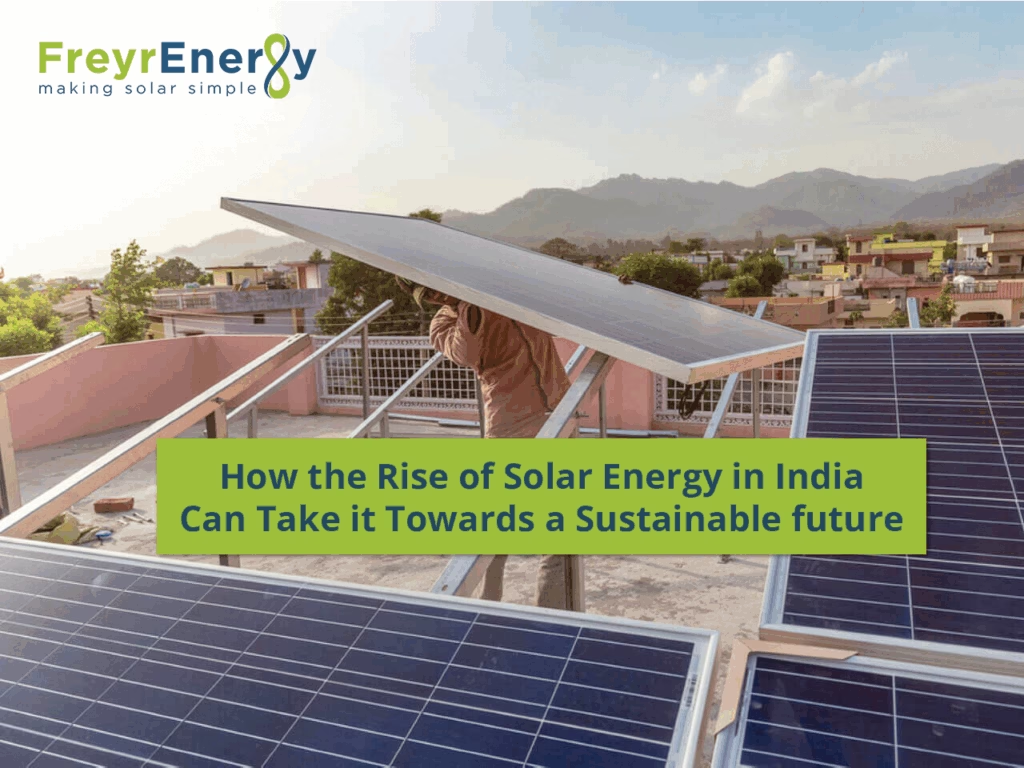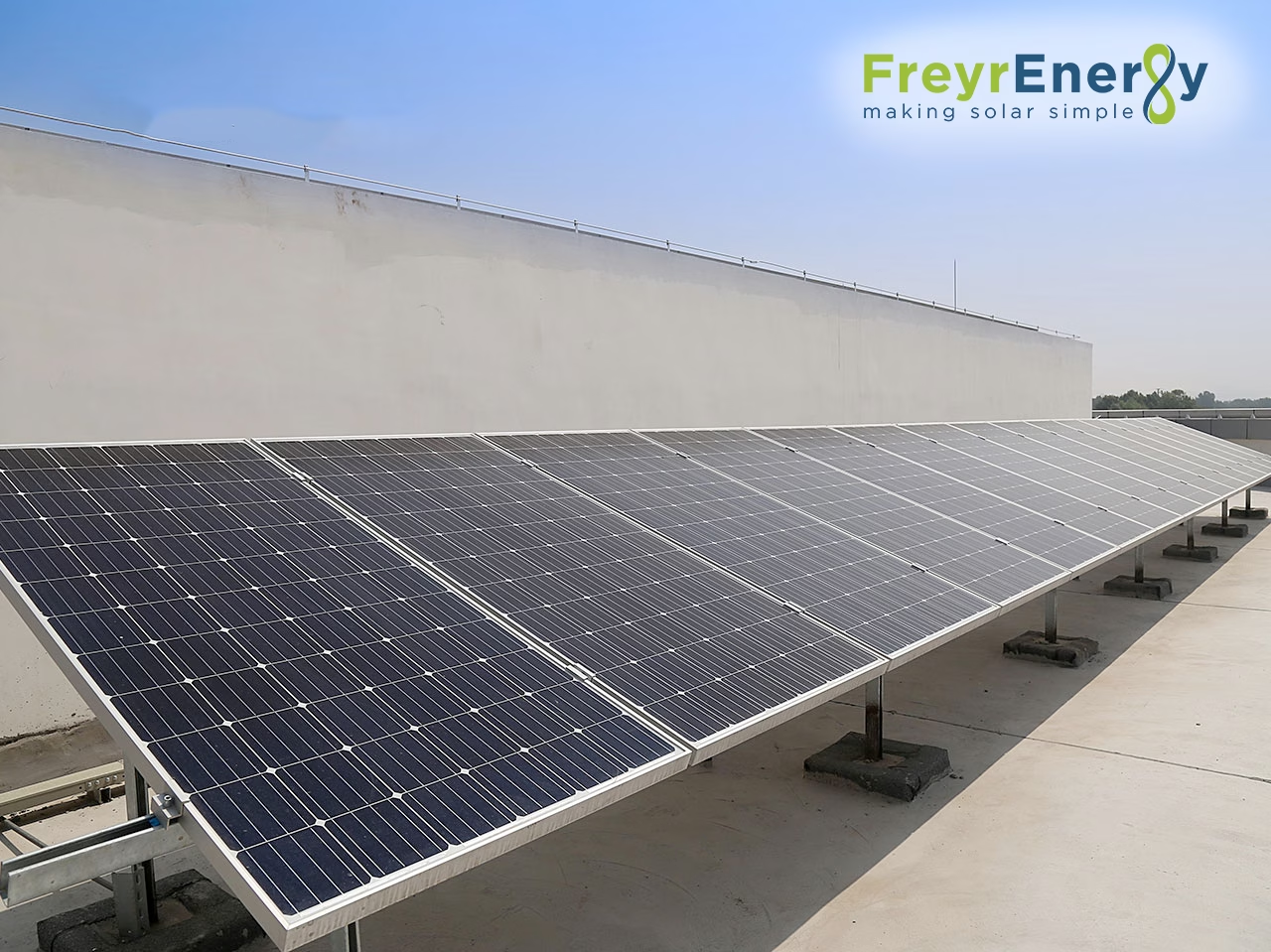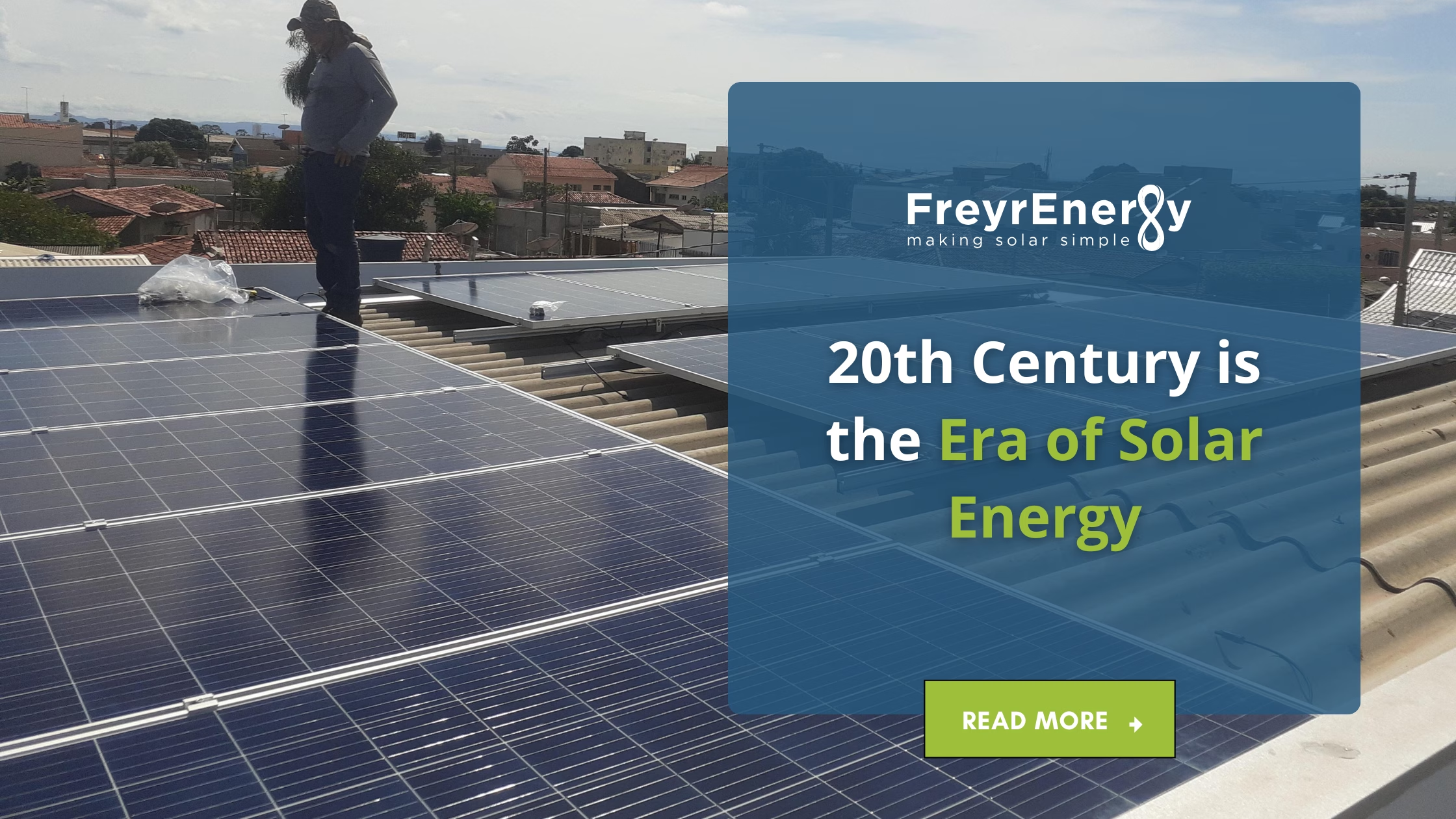Over the past few decades, solar energy in India has emerged as a potential substitute for conventional forms of energy. Solar technologies use sunlight to create energy. They turn sunlight into electrical energy through Photovoltaic panels or mirrors that concentrate solar radiation and can be used for multiple purposes like generating electricity or thermal storage. Many ongoing researches suggest future of solar energy in India, and scientists are working day and night to explore new dimensions of solar technologies. Considering the benefits of Solar energy, countries all across the globe are adapting solar technologies in order to replace conventional energy.
Similar to other countries, Indian scientists are also venturing to explore solar technologies and create abundant solar energy in India.
The constant efforts of the country are bearing fruits as India’s installed non-fossil fuel capacity has increased 396% in the last 8.5 years and saw the highest growth in renewable energy additions of 9.83% in 2022. India is taking significant steps to make future solar power in India without depending on the resources of other countries. India aims to become a self-reliant and self-sufficient solar energy-producing nation and targets to produce five million tons of green hydrogen by 2030.

Why Solar Energy is Imperative for a Sustainable Future?
In the contemporary world, the environmental crisis is at its peak, and issues like global warming and the depletion of fossil fuels have called for the need for sustainable and clean energy sources. The need for greener energy sources has become increasingly apparent in today’s context. The problem caused by using conventional energy brings solar energy into centre stage and highlights the need for greener energy sources. The below comparison between solar energy and conventional energy will make you understand how solar energy is better than conventional energy and why it’s important to make solar power in India.
- Conventional energy sources include fossil fuels which cause depletion of fossil fuels, in contrast, solar energy requires sunlight only.
- Conventional sources of energy are limited, while solar energy is available in abundance.
- Conventional energy sources have high fuel costs and operational expenses. Though the initial cost of solar power plants is high, it gives long-term savings.
Solar Energy vs. Conventional Energy: Which Energy is Best for a Sustainable Future
Traditionally, people depended upon conventional energy sources such as coal, fossils, etc. With the span of time, people move towards a sustainable solar energy future in India and opt for renewable energy sources such as solar energy. Innumerable people are installing the best solar panels in India as they consider solar energy at the top.
Here we have compiled various features of solar and conventional energy in the table. Let’s have a look!
| Comparison Aspect | Solar Energy | Conventional Energy |
| Source | Derived from sunlight and photovoltaic cells. | Generated from fossil fuels (coal, oil, natural gas), nuclear reactions, and hydroelectric dams. |
| Impact on Environment | Renewable and sustainable energy with low greenhouse gas emissions. | Produced from finite and depleting resources with high greenhouse gas emissions. |
| Pollution | Minimal air and water pollution during operation. | Significant air and water pollution from burning fossil fuels. |
| Resource Availability | Abundant, virtually inexhaustible sunlight. | Finite resources, depletion over time. |
| Cost | Long-term savings and requires low Initial installation cost. | Lower initial costs, but volatile fuel prices affect long-term expenses. |
| Energy Independence | Enhances energy independence for individual users and countries. | Relies on imports of fossil fuels in many cases and affects energy security. |
| Maintenance | The supply of conventional energy resources is suspected as disrupted. | Conventional energy power plants require complex and regular maintenance. |
| Reliability | Depends on sunlight and weather conditions. | Supply of conventional energy resources is suspected as disrupted. |
| Technological Advancements | Efficiency and storage technologies are continuously improving. | Incremental improvements in conventional power generation. |
| Impact on Climate Change | Helps mitigate climate change by reducing carbon emissions. | A major contributor to climate change due to greenhouse gas emissions. |
| Benefits | Beneficial for residential and commercial spaces. Plus, government schemes are also promoting solar power use. | It Consumes high cost and no government scheme is in favor of using conventional energy. |
Challenges in Scaling Up Solar Technology
India is making significant strides in developing affordable, secure solar energy, but still, the challenges remain. Here’s a list of challenges that obstruct the aim of developing robust solar energy in India.
Lack of Manufacturing Capacity
It’s really hard to reform India’s ailing power distribution companies and scale up the rooftop solar storage and manufacturing capacity as there’s a lack of R&D, and modern facilities manufacturing infrastructures of solar panels.
Fragile Financial Planning
Solar technology is quite expensive, so decreasing the cost of making solar energy is another challenge that the Indian Government has yet to tackle. It requires robust financial planning to improve the flow of investments.
India’s Population
India is the world’s most populated country, so meeting the electricity requirements of such a large population using solar energy is a big challenge in itself. A huge population also faces challenges in installing the best solar panels in India.
Solar Energy Unlocks the Growth Opportunities
India is endowed with a vast solar energy potential unlocking various growth opportunities and some of them are as follows.
Generating Job Opportunities
Solar energy production requires significant skills and with the rise of solar energy production, more job opportunities will be created. It will ultimately improve economic growth and development in various regions or local areas.
Technological Advancements
Growth in solar technology improves efficiency, reduces cost, and provides better energy storage solutions. It enables remote and rural areas to access electricity and decentralize the supply of electricity. It’ll increase the installations of solar panels for homes also.
Government Policy Incentives
India is moving towards a sustainable future and the government is supporting this vision with various schemes or policies. National Solar Mission, solar park development, and incentives for solar rooftop installations are the major policies associated with solar energy growth.
Role of Solar Technology in Making India a Solar Superpower
Currently, India is the 5th largest solar power producer in the world, along with China and the United States at the top. In total, India has 300 sunny days and abundant resources, as a result, India can spearhead a sun-sourced power revolution. To make solar energy in India, this power revolution will be backed by the National Solar Mission. By carefully regulating capital availability and designing market-based solutions, there can be a precipitous fall in the cost of solar power.
Eliminating the Use of Coal
The growth of India in renewable energy sources is faster than expected by anyone. Since the 1990s, the Indian Government has pursued strategic long-term decisions to favour renewable energy sources over coal-based electricity. As an outcome of these strategic decisions and targeted regulations, the country’s coal-dominated power market has slowly tilted towards solar. By making solar energy in India the government can also regulate its carbon emissions thus contributing towards a sustainable future.
Moving Towards Greener Power Sources
India started taking a solar approach in the early 2000s by introducing a series of legislative reforms. In 2003 the Indian Parliament introduced the new Electricity Act which gives innovative open access to the purchasers of solar power with the capacity to source above 1 MW power from suppliers other than the utility to which they were connected. In 2009 and 2011 the Indian Government established two institutions to promote the supply of renewable and solar energy. Even in 2013, the Indian Government undertook a nationwide study to examine how to bring down the cost of solar energy which is four times the cost of coal, and scale up the deployment of solar power in India.
Increasing Dependence on Rooftops for Power
To tackle the issue of uninterrupted power supply, India is developing rooftop solar energy. The rooftop solar energy can bring India a step closer to achieving its national target of 450 GW of renewable energy capacity by 2030. Even the government is determined to provide the required ecosystem — affordable finance, efficient metering, and consumer awareness to drive exponential growth.
The rooftop solar technology is comparatively cheaper than the grid-supplied electricity. Experts believe that the Indian Government should provide some subsidies and communicate with local banks regarding affordable loan financing to make solar rooftop installations more accessible for residential consumers.
What is the Role of Freyr Energy in Revolutionizing India’s Solar Market?
Freyr Energy is a well-known solar solution provider that has the best solar panels in India. By making affordable solar panels for home, Freyr has played a central role in spreading awareness about solar technology and promoting the adoption of solar energy across the nation.
Makes Solar Technology More Affordable and Accessible
The cost of solar technology is the main villain of solar energy. Due to the high cost, people abstain from using solar technology, but Freyr Energy tries to tackle this challenge by providing flexible solar financing options like no upfront payment, zero-cost EMI, and digital loans to the consumers.
Brings Together Technology and Innovation
Freyr Energy follows the footprints of the government and aims to support the government’s dream of making solar energy in India. It works at the forefront of technological advancements in the solar industry. Its Freyr Energy Solar App can help you make the easy transition toward solar technology. Furthermore, it will teach you everything about solar, the method to get solar panels for your home, how you can order a system, track project status, and monitor your system performance.
Provides Customized Solutions For All
The solar energy requirements of every individual are different and that’s why Freyr Energy uses its industrial knowledge and experience to offer customized solutions to the unique needs of commercial, residential, and industrial customers. It provides the best solar panels in India for commercial as well as residential use.
Has Something for Solar Power Future in India
Freyr Energy has been providing solar solutions to people for years. It offers high-quality solar components from tier 1 and has something for every customer. It has a dedicated team of skilled technicians that provides reliable and durable installations. Besides, their customer service is also up to the mark and addresses the concerns of every person to ensure customer satisfaction.
The Final Verdict
Freyr Energy plays a crucial role in revolutionizing solar energy in India. It works towards the government’s aim of generating abundant solar power in India. It is an important factor in establishing and promoting solar energy adoption with its best solar panels in India. All the efforts of Freyr Energy are in the direction of making India a self-reliant solar energy nation.
Frequently Asked Questions
Both solar and wind energy are renewable energy sources , but solar energy is generated from sunlight using solar panels, whereas wind energy relies on wind speed and consistency through wind turbines.
There are many factors supporting the future of solar energy in India such as abundant sunlight, supportive government policies, and declining technology costs. Furthermore, people are installing solar panels for Homes as India is focusing on sustainable development goals in which solar energy is playing a key role.
Solar energy is a non-conventional energy also known as a renewable energy source. It is an eco-friendly way of producing electricity that is derived from sunlight, which is abundant and naturally replenished.
Solar energy is better than conventional sources of energy as it is renewable, sustainable, and does not deplete finite resources. Solar power generation produces zero emissions, helping combat climate change and reduce adverse environmental impact. Additionally, it saves costs, empowers communities with access to electricity, and promotes sustainable living.



